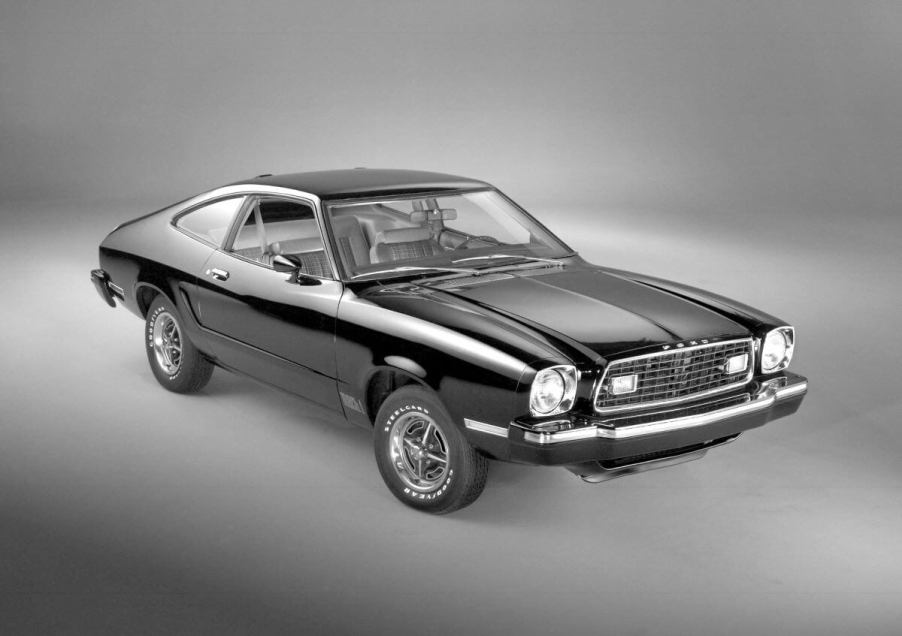
What Was the Most Shocking Car Ford Ever Discontinued?
In 1985, beverage giant Coca-Cola thought it would be a brilliant business decision to reformulate its flagship product, which was increasingly losing sales to its competitor, Pepsi. Bad idea. New Coke, as it was called, was an epic flop, and within months, Coca-Cola scurried to bring back the old formula, renamed Coca-Cola Classic.
If there’s an automotive equivalent to New Coke, it surely must be Ford‘s Mustang II from the mid-1970s. Heck, even the name hints at risky alterations to the successful Mustang formula, as with the sugary soft drink. Still, the oft-maligned Mustang II kept the nameplate alive during some dark times in automotive history; we should be grateful for that.
The Mustang II was supposed to be a hit for Ford
When the original Mustang debuted in 1964, it gave Ford a badly needed boost. Competitors rushed to design their own sporty compact coupes like the Chevy Camaro, AMC Javelin, and Dodge Challenger. Before long, the Mustang literally had an entire class of vehicles named after it: the pony car.
By 1973, the Mustang had grown to bulbous proportions and gained approximately 800 pounds from its former lithe self, according to CJ Pony Parts. That was particularly undesirable considering the oil crisis at the time, which spiked gasoline prices and even led to shortages. Mustang sales began to tank as buyers selected more compact Fords instead, like the Pinto and Maverick. Then-president of Ford, Lee Iacocca, famously commented, “The Mustang market never left us, we left it.”
A brand new and much downsized Ford Mustang II debuted in 1974, looking just like the stretched Pinto that it was. More shockingly, there was no V8 engine option. Buyers of the inaugural Mustang II could choose between an anemic inline four-cylinder or the top power option, a weak sauce V6.
In 1975, Ford came to its senses and shoehorned in a 302 cubic inch V8. While this was a step in the right direction, performance was still lackluster. Even though the Mustang II was smaller than the 1971 to 1973 body style that it replaced, it was still a relatively heavy car because of newly-mandated emissions and safety equipment.
At first, the Mustang II sold well, as shiny new things tend to do. But by 1975, sales were cut in half, where they remained for the rest of the Mustang II’s short tenure, according to Slash Gear. In 1978, the model that was supposed to save the Mustang nameplate was discontinued in favor of the redesigned Fox-body Mustang, which lasted for an incredible 15 years.
Other surprising discontinuations from Ford
In the late 1980s, Ford darn near repeated the Mustang II debacle when it geared up to replace the rear-wheel drive V8-powered Fox-body Mustang with a front-wheel drive, six-cylinder (at best) car co-designed with Mazda. Mustang fans were irate, so Ford released the new car as a separate model instead: the Probe. After 10 years of fair-to-middling success in the marketplace, Ford unceremoniously killed the Probe, even as a third-generation was in development.
Like the Mustang, the Thunderbird was also a fixture of Ford‘s lineup. It first appeared in 1955, and when it got the axe in 1997, many car enthusiasts thought it was gone for good. However, for better or worse, Ford couldn’t abstain from the retro car craze that gripped America in the late 1990s and early 2000s. In line with the New Beetle and PT Cruiser, Ford brought us a 2002 Thunderbird that looked much like its mid-1950s predecessor — a car immortalized in the film American Graffiti with Suzanne Somers behind the wheel.
Underneath the throwback body panels, it was more like “English Graffiti” because the eleventh-generation Thunderbird rode on a platform shared with several Jaguar models. Ditto for the 3.9-liter Jaguar V8 engine. The popularity of retro car designs faded as quickly as it arrived, and by 2005, the Thunderbird flew no more, a victim of poor sales.





